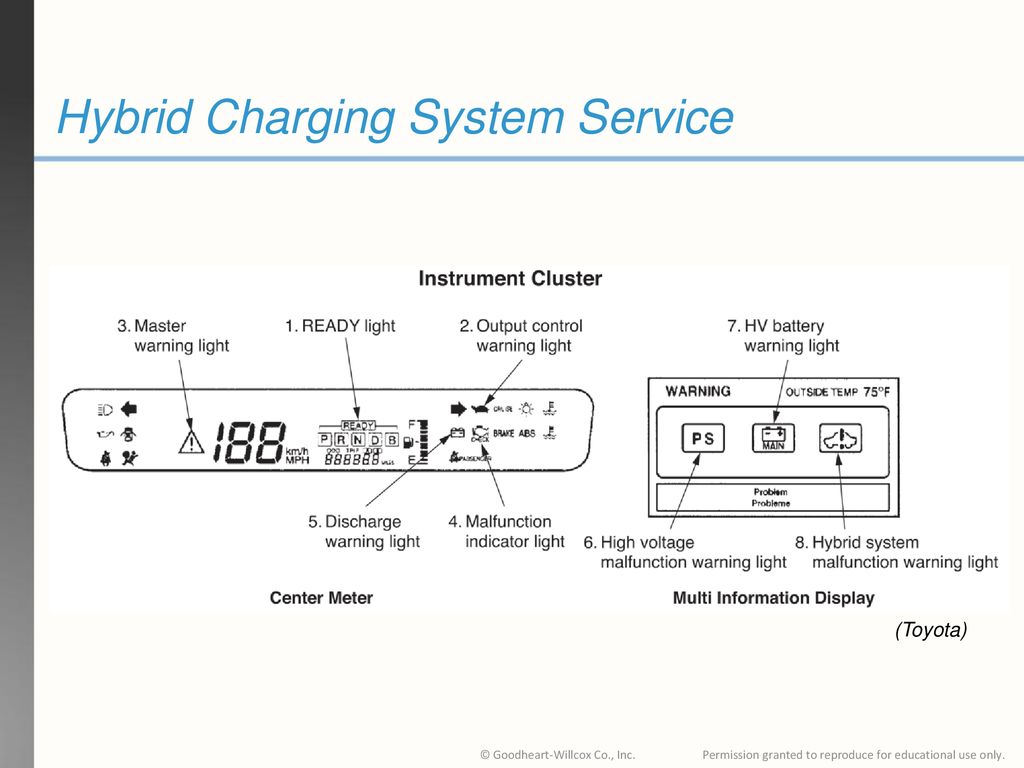charging system malfunction toyota: If the charging system light illuminates, this indicates an issue with either your alternator or battery that requires immediate attention. Pull over into a safe location immediately and call for assistance as soon as possible.
Toyota charging systems are complex networks of components designed to keep the battery charged while powering various electrical systems in your car. Should any issues arise with these components, it’s crucial that they’re repaired quickly before further damage occurs.
Battery
Your Toyota battery is responsible for keeping its electrical components powered and charged, including keeping its alternator and voltage regulator functioning optimally. Unfortunately, issues can arise that hinder this function; such as a failing alternator or voltage regulator. Regular inspections may help resolve this problem; it’s also wise to pay attention to warning lights on your dashboard so as to have your car serviced as soon as possible if one appears.
If your check charging system light is illuminated, this indicates a problem with the charging system. This could be caused by anything from a bad battery, an alternator not functioning correctly or wiring issues; but an experienced mechanic should be able to quickly assess and repair this.
As your car drives, the alternator recharges the battery. This essential part of its charging system plays a critical role; should it fail however, the battery could eventually die leaving engine and accessories vulnerable.
Many drivers notice when driving their vehicle that their battery light illuminates, signaling that its charge has been lost and should be replaced immediately. When making this decision it is also wise to factor in age of both components as replacing them as soon as they nearing end of lifespan may be less costly than investing in new batteries/alternators right away.
Alternator
charging system malfunction toyota: The alternator works in tandem with your battery to power and charge all of the electrical components in your car, such as headlights. If it begins malfunctioning, however, you may experience dimmed headlights, difficulty operating your radio or power windows/seats and dashboard warning lights appearing – as well as whining sounds or decreased overall power from it.
If you suspect an issue with your charging system, it is advisable to seek professional help immediately. These experts are adept at performing diagnostic tests and repairs to ensure that your car runs efficiently; additionally, they will inspect and clean battery terminals to prevent corrosion from restricting electricity flow.
Maintaining the voltage regulator and battery is important to the proper functioning of your Toyota’s electrical system, so regular checks on these parts is advised. These parts can often be repaired or replaced easily if they’re in good condition; otherwise if they begin to fail they must be replaced immediately to keep its electrical system operational. When selecting OEM replacement parts to use for replacement purposes – aftermarket parts may seem cheaper but could lead to further complications with your electrical system; an experienced mechanic should be able to advise whether their use warrants further risk.
Voltage Regulator
Seeing a battery icon on your dashboard indicates there may be issues with your vehicle’s charging system. Your powertrain control module activates this warning light when it detects issues with either your alternator, battery or any component related to these two parts.
If the warning light flashes during your drive, find a safe location and pull over. Shutting off non-essential accessories will conserve what power may remain in your battery until it can be recharged or replaced.
One telltale sign of a failing voltage regulator is when car lights dim or flicker, such as headlights, dash lights and even sound system components. Since voltage regulators play such an essential role in keeping power flowing to these components, when one fails, these lights cease functioning correctly and cannot keep working as needed.
You may also experience engine sputters or stalling when the voltage regulator fails, which could be caused by low alternator output or its inability to maintain an output voltage level that matches engine speed. As this component is integrated into and mounted onto the alternator itself, when its functionality fails you’ll likely need to replace both parts together.
Wiring
charging system malfunction toyota: When the engine is running, its alternator converts mechanical energy from combustion into electrical power, powering your vehicle and charging your battery. If something goes amiss with this system, a warning light may illuminate. Should it persist even after attempts at restarting have failed, your Toyota Highlander may become difficult to start up again.
Wires connect all of the electrical components of a charging system, making a single broken or damaged wire enough to disrupt its proper function and change everything about a system’s functioning. A voltage regulator controls how much electricity is produced by an alternator; an unstable voltage regulator could lead to overcharging or undercharging battery storage space and set off warning alarms when its function malfunctions.
Corroded or loose battery terminals can interrupt the flow of electricity, leading to an unstable charging system. If they show signs of wear and tear, it’s wise to replace them with new ones as soon as possible. Corroded wiring can lead to shorts in your system while defective wires or electrical fuses could hinder its performance further.
Not only can qualified technicians inspect electrical connections, they can also diagnose issues with the engine control unit (ECU). The ECU is the complex computer that controls every aspect of engine performance. Any glitches within it could result in poor engine performance, stalling, or error codes; your dealer’s technicians possess all of the factory tools and expertise to repair any ECU-related problems for smooth engine operation.


1 thought on “Toyota Highlander Batteries – Check Charging System Maturity”